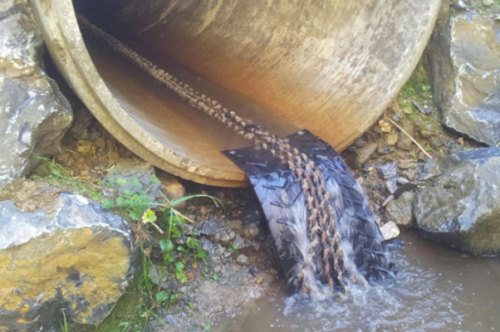Within the National Environmental Standards for Freshwater 2020 (NES-F), there are now rules relating to structures that affect fish passage, including the need to provide specified information to the Council for any new structures in rivers.
An important issue for Tasman District is the maintenance and enhancement of fish passage. Many of our fish species (e.g. whitebait and eels) undertake significant migrations as part of their lifecycle. However, instream structures, such as culverts, weirs, and dams, can delay or prevent fish movements and stop them from accessing critical habitats and completing their natural lifecycles.
The National Environmental Standards for Freshwater 2020 (NES-F) (see sections 58-78) introduced new national regulations for fish passage. Instream structures must now meet minimum environmental conditions for fish passage and may need resource consent. The rules apply to all instream structures (eg. Culverts, weirs, flap gates, fords, and dams), both temporary and permanent installed after 3 September 2020. These new nationwide rules are in addition to the regional rules contained in Part 4 of the Tasman Resource Management Plan (TRMP), which must also be considered.
The New Zealand Fish Passage Guidelines set out recommended standards for the design and restoration of instream infrastructure to provide for fish passage.
Tasman District Council - Best Practice Guidelines for Water Crossings (pdf 825 KB)
The Ministry for the Environment has developed a range of fish passage assessment tool resources, including:
Under the National Environmental Standards for Freshwater 2020 (NES-F) and regional rules contained within the TRMP, the installation, alteration, maintenance, and removal of some structures is a permitted activity – and therefore does not require resource consent – but only if you can meet the specific requirements outlined below.
There are two main requirements under the NES-F.
We appreciate this is a lot of complex information. If you think you may require resource consent, our duty planner is here to help. Please call 03 543 8400 and we can arrange for you to have a free pre-application meeting with one of our duty planners. Alternatively, you can ask a question of our duty planner here.
When installing a structure in a waterway, you must provide information about the structure to Council within 20 days of it being installed. The information must be provided for both permitted and consented activities.
All of the information can be collected and submitted to us using the Fish Passage Assessment Tool (FPAT), a mobile app maintained by NIWA . It is free for anyone to use. This tool contains all the reporting parameters required by NES-F Regulation 62, so by using it, you will easily comply with the reporting requirements.
Examples of the information required include:
While the new regulations do not apply to instream structures installed before 3 September 2020, it is still important to ensure those structures provide for fish passage. There are options for remediating or retrofitting structures to help fish passage.

Through the Fish Passage Project , Council is able to offer support private landowners by assessing any in-stream structures (such as culverts) and completing remediation when required and within the scope of the project funding.
If you have any questions about the new Essential Freshwater regulations for fish passage, please make direct contact with our Catchment Advisors via [email protected]